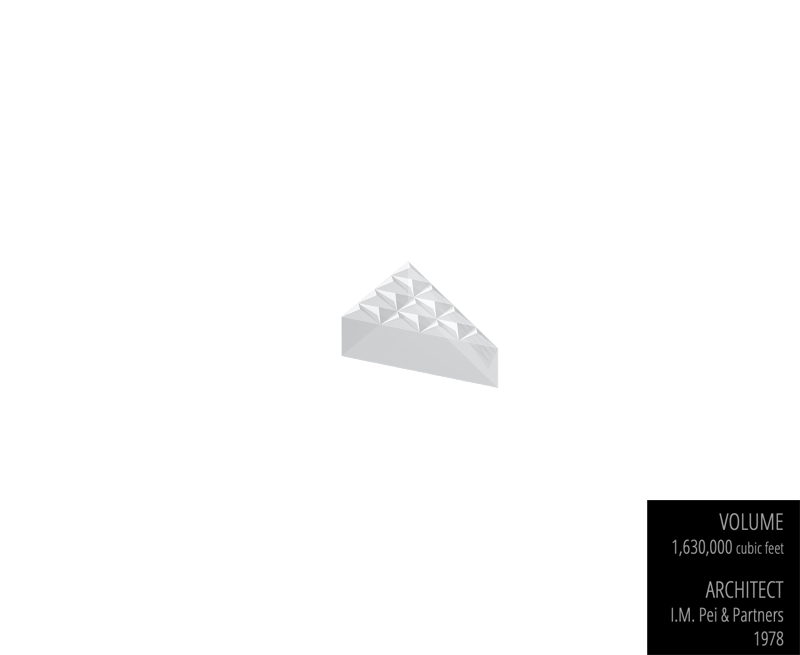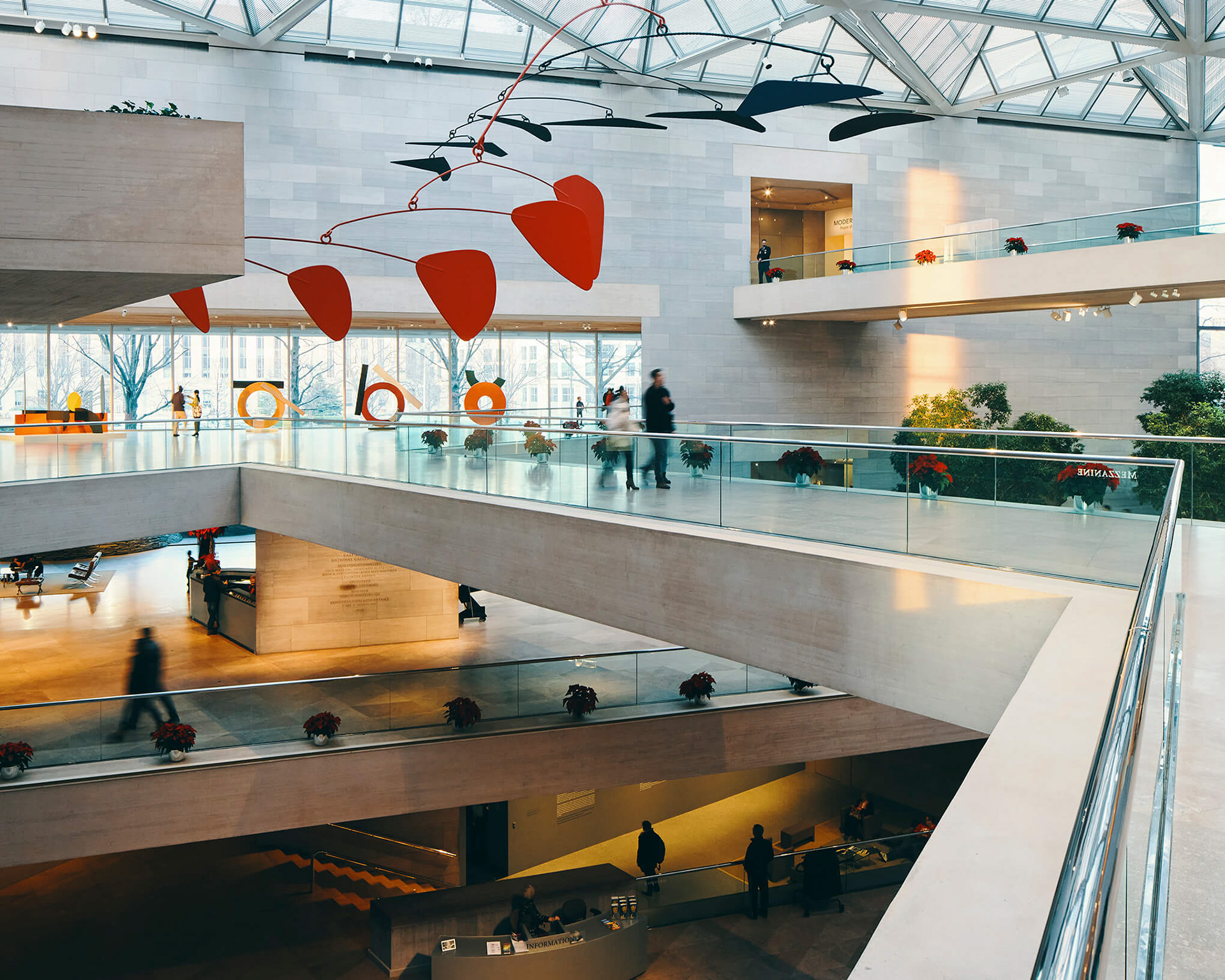Exploring The National Gallery Of Art East Building: Architecture, Art, And Legacy
So, you’re here because you want to dive deep into the National Gallery of Art East Building, huh? Well, buckle up, my friend, because we’re about to embark on an epic journey through one of the most iconic architectural marvels in the art world. The East Building isn’t just a museum; it’s a masterpiece in itself, standing tall as a testament to human creativity and innovation. From its groundbreaking design to the incredible art housed within its walls, this place is a must-see for anyone who appreciates beauty and history. Let’s get started, shall we?
This article isn’t just about giving you facts—it’s about making you feel the essence of the East Building. Whether you’re an art enthusiast, an architecture buff, or someone who simply loves exploring unique spaces, this piece will take you on a virtual tour that’s as close as it gets to the real thing. We’ll uncover the stories behind the building, its architectural brilliance, and the legacy it leaves behind.
But wait, there’s more! This isn’t just some boring textbook-style write-up. Think of it as a casual conversation between friends, where we share insights, cool trivia, and maybe even a few secrets about the East Building. So, grab your coffee, settle in, and let’s unravel the magic of this incredible place together.
Read also:Jo Frosts Husband A Deep Dive Into Their Relationship And Life Together
Table of Contents
- A Brief History of the National Gallery of Art East Building
- Exploring the Architectural Wonders
- The Genius Behind the Design
- The Art Collection: A Treasure Trove of Masterpieces
- The Legacy of the East Building
- Tips for Visiting the East Building
- The Cultural Impact of the East Building
- Challenges Faced by the East Building
- What the Future Holds
- Final Thoughts: Why the East Building Matters
A Brief History of the National Gallery of Art East Building
Alright, let’s rewind the clock and take a trip back to the 1970s, when the East Building was still just an idea in the minds of some visionary architects and art lovers. The National Gallery of Art, located on the National Mall in Washington, D.C., had outgrown its original home, the West Building. So, they needed a solution—a solution that would not only expand their exhibition space but also complement the existing structure.
Enter I.M. Pei, the legendary architect who was tasked with designing this new addition. Now, designing a building that would stand alongside the classical grandeur of the West Building wasn’t an easy feat. But Pei, with his futuristic vision and innovative approach, managed to create something truly extraordinary. The East Building officially opened its doors in 1978, and it’s been captivating visitors ever since.
The Design Process: From Sketch to Reality
Pei’s design process was nothing short of revolutionary. He started by studying the site’s unique triangular shape, which was leftover from the West Building’s construction. Instead of seeing this as a limitation, Pei turned it into an opportunity. He divided the triangle into two smaller triangles, creating a geometric design that became the building’s signature feature.
But the design wasn’t just about aesthetics. It was also about functionality. The East Building was specifically designed to house modern and contemporary art, which required different spaces and lighting conditions compared to traditional works. Pei’s solution? A series of interconnected galleries, each with its own unique character, allowing visitors to experience art in a dynamic and engaging way.
Exploring the Architectural Wonders
Now, let’s talk about what makes the East Building so special from an architectural standpoint. This place isn’t just a building; it’s a work of art in itself. The sleek lines, the geometric shapes, and the use of natural light all come together to create an experience that’s both awe-inspiring and thought-provoking.
One of the standout features of the East Building is its use of travertine marble. This same material was used in the West Building, ensuring a seamless transition between the two structures. But the East Building takes it a step further, incorporating glass and steel to create a modern twist on classical elegance.
Read also:A Sneaky Look At Rob Dyrdek Net Worth The Skaters Fortune Unveiled
The Roof Design: A Masterstroke
If you’ve ever been inside the East Building, you’ve probably noticed the incredible roof design. It’s not just there for show; it serves a practical purpose as well. The roof is made up of a series of triangular skylights that allow natural light to flood the interior spaces. This not only enhances the viewing experience but also reduces the need for artificial lighting, making the building more energy-efficient.
The Genius Behind the Design
I.M. Pei wasn’t just any architect; he was a mastermind whose designs continue to influence architects around the world. His approach to the East Building was rooted in a deep understanding of both art and architecture. He believed that the two disciplines should coexist harmoniously, and he achieved this by creating spaces that were as much about the journey as they were about the destination.
Pei’s design philosophy was all about simplicity and elegance. He once said, “The simplest things are often the truest.” And nowhere is this more evident than in the East Building. From the clean lines of the exterior to the carefully curated interiors, every detail was thoughtfully considered to create a space that would inspire and delight.
Impact on Modern Architecture
The East Building didn’t just stop at being a beautiful structure; it also had a profound impact on modern architecture. Its innovative use of geometric shapes and natural materials set a new standard for museum design. Today, architects around the world look to the East Building as a model of how to create spaces that are both functional and aesthetically pleasing.
The Art Collection: A Treasure Trove of Masterpieces
Of course, no discussion about the East Building would be complete without talking about the incredible art collection housed within its walls. This place is home to some of the most iconic works of modern and contemporary art, from Jackson Pollock’s abstract expressionism to Roy Lichtenstein’s pop art masterpieces.
But it’s not just about the big names. The East Building also showcases emerging artists and lesser-known works, giving visitors a chance to discover new talents and perspectives. It’s like a treasure hunt, where every corner you turn reveals something new and exciting.
Must-See Works in the East Building
- Jackson Pollock’s “Number 32, 1950”
- Roy Lichtenstein’s “Drowning Girl”
- Claes Oldenburg’s “Giant Three-Way Plug”
- Judy Chicago’s “The Dinner Party”
These are just a few examples of the incredible works you’ll find in the East Building. Each piece tells a story, and together, they create a narrative that spans the history of modern art.
The Legacy of the East Building
The East Building’s legacy extends far beyond its walls. It has become a symbol of innovation, creativity, and cultural significance. It’s a place where people from all walks of life can come together to appreciate and celebrate the power of art.
But its legacy isn’t just about the past; it’s also about the future. The East Building continues to inspire new generations of artists, architects, and art lovers. It’s a reminder that art and architecture can transform the way we see the world and our place in it.
Community Impact: Bringing People Together
One of the most important aspects of the East Building’s legacy is its impact on the local community. It serves as a cultural hub, hosting events, workshops, and educational programs that engage and enrich the lives of those who visit. It’s not just a museum; it’s a living, breathing entity that evolves with the times.
Tips for Visiting the East Building
So, you’re thinking about visiting the East Building? Great choice! Here are a few tips to help you make the most of your visit:
- Plan ahead and check the museum’s website for opening hours and special exhibitions.
- Wear comfortable shoes; there’s a lot of walking involved!
- Take a guided tour if you want to learn more about the building’s history and art collection.
- Don’t forget to grab a coffee or snack at the museum café—it’s the perfect spot for a break!
And remember, the East Building isn’t just a place to see art; it’s a place to experience it. So, take your time, soak it all in, and let the magic unfold.
The Cultural Impact of the East Building
The East Building’s influence extends far beyond the art world. It has become a cultural icon, representing the best of human creativity and innovation. Its impact can be seen in everything from architecture and design to education and community engagement.
But perhaps its greatest impact is on the people who visit. Whether you’re an art expert or a casual visitor, the East Building has a way of leaving a lasting impression. It challenges you to think differently, to see the world in new ways, and to appreciate the beauty that surrounds us.
Global Recognition: A Beacon of Culture
The East Building’s reputation isn’t limited to the United States. It’s recognized around the world as a leading institution in the art and architecture community. Its influence can be seen in museums and galleries across the globe, as they strive to create spaces that are as inspiring and engaging as the East Building.
Challenges Faced by the East Building
Of course, no institution is without its challenges. The East Building has faced its fair share of obstacles over the years, from funding issues to the need for renovations. But through it all, it has remained resilient, adapting to the changing times and continuing to serve as a beacon of cultural excellence.
One of the biggest challenges the East Building faces today is the need to balance tradition with innovation. As new technologies and artistic movements emerge, the museum must find ways to incorporate them while staying true to its roots. It’s a delicate balancing act, but one that the East Building seems to handle with grace and finesse.
What the Future Holds
So, what does the future hold for the East Building? One thing’s for sure: it will continue to evolve and grow, embracing new technologies and artistic trends while staying true to its mission of inspiring and educating the public.
There are plans for new exhibitions, expanded educational programs, and even a potential expansion of the building itself. The East Building is committed to staying relevant and engaging, ensuring that it remains a vital part of the cultural landscape for generations to come.
Final Thoughts: Why the East Building Matters
As we wrap up this journey through the National Gallery of Art East Building, it’s clear that this place is more than just a museum. It’s a testament to human creativity, a celebration of art and architecture, and a reminder of the power of cultural institutions to bring people together.
So, if you haven’t already, make it a point to visit the East Building. Whether you’re a lifelong art lover or a first-time visitor, you’re sure to be inspired by its beauty, its history, and its legacy. And remember, the East Building isn’t just a place to see art; it’s a place to experience it. So, go out there, explore, and let the magic unfold.
And hey, don’t forget to share this article with your friends and family. Who knows? You might just inspire someone else to discover the wonders of the East Building. Until next time, keep exploring, keep learning, and keep appreciating the beauty that surrounds us.
Article Recommendations


